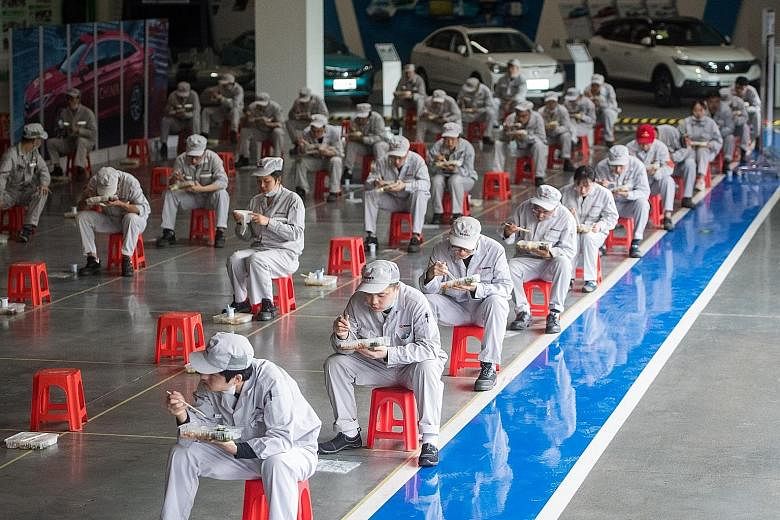After two months of living under lockdown, residents in Hubei will be allowed to leave the province from this morning if they are shown to be healthy.
The provincial capital Wuhan, where the coronavirus outbreak erupted, will also lift its clampdown on April 8.
The city of 11 million was sealed off on Jan 23 in a drastic move by the authorities to stem the rapid spread of the disease, which first showed up last December and quickly engulfed the region wit-hin weeks.
The rest of the province followed suit, keeping residents in and suspending all forms of public transport, affecting 47 million others.
Yesterday, the Hubei health authorities said "outbound traffic will be restored in an orderly manner", and they would let people travel within the province or out of its borders if they display a mobile health code that shows they are healthy.
A health code labelled "green" on a mobile app indicates one has no contact with virus cases. Yellow is for those with close contact with a virus case, while red indicates a suspected or confirmed case that must be quarantined.
Meanwhile, several airports in the region - Enshi, Xiangyang and Shennongjia - are expected to reopen today, local media reported.
The easing of restrictions in the epicentre comes as health officials claim the outbreak has been brought under control, with zero cases of infection being registered for days in the past week.
But reports have also surfaced of hospitals refusing to test people for the virus, and asymptomatic patients falling off the official tally, which have raised fears that it could bring on a new wave of infections once the quarantine measures are lifted.
Yesterday, the National Health Commission acknowledged the risk of further outbreaks, with its spokesman Mi Feng telling a news conference that "prevention and control work could still not be relaxed".
Other Chinese cities have imposed increasingly tough measures for inbound travellers to minimise the risk of the virus being imported and causing a second wave of infections.
The number of imported cases has surged to 427, with retur-ning Chinese accounting for 380 of them, the Foreign Ministry said yesterday.
Locally transmitted infections have fallen dramatically in weeks. Yesterday, the health commission said there were four such domestic cases - one in Wuhan - while imported cases numbered a record 74, including 31 in Beijing.
The capital city has begun testing inbound travellers for the virus using swab tests. Since March 16, all incoming foreigners and Chinese nationals have had to serve out a 14-day centralised quarantine.
And since Monday, it has been diverting Beijing-bound flights to other airports for screening first.
Still, life is slowly returning to normal as more people go back to work and shops resume operations. Yesterday, the famous Badaling section of the Great Wall in Beijing partly reopened, after being shut for nearly two months.
As many as 3,277 people have died from the virus in China and more than 81,000 people have been infected.

